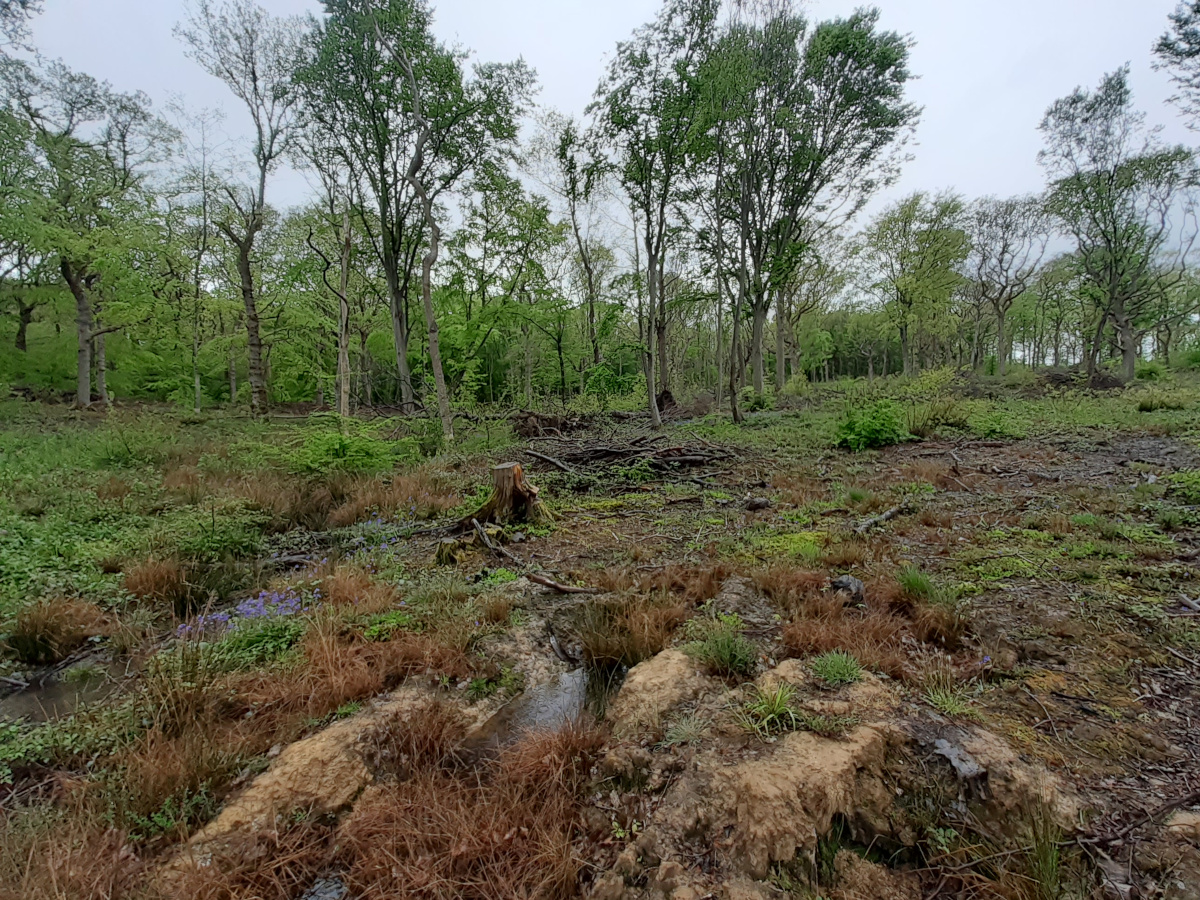
Conservation charity The Royal Society for the Protection of Birds (RSPB), and ecological consultancy Ecological Planning and Research (EPR), say they are working together to mitigate the impact of climate change on critical ancient woodland and to safeguard iconic bird species, including the Lesser Spotted Woodpecker, Nightingale, and Spotted Flycatcher.
Woodlands across the south of England were once highly biodiverse and dynamic, largely thanks to temperate conditions and reliable rainfall that typically supports varied insect life. This biodiversity, in turn, provides food for many larger species. However, the impact of climate change – namely, heavier rainfall over winter and hot, dry summers – combined with drainage for historical wood cropping, means that many woodlands are now drying out, resulting in less insect biomass for wildlife such as woodland birds to feed on.
This, combined with other pressures such as habitat loss and fragmentation, is a factor influencing the long-term decline of woodland birds, with much loved species such as the red listed Lesser Spotted Woodpecker and Marsh Tit showing a significant decline, and the Willow Tit already lost in Kent.
To help combat the loss of woodland biodiversity, a partnership led by the RSPB and including Kent Wildlife Trust and Canterbury City Council secured £1.9m for a major landscape-scale restoration project, to help mitigate the effects of climate change on local woodland and grassland habitats. The project is funded by the government’s Green Recovery Challenge Fund. This fund is being delivered by The National Lottery Heritage Fund in partnership with Natural England and the Environment Agency. The RSPB has therefore contracted EPR to survey the area, inclusive of water courses, and collect data on bird species.
EPR will use GIS and LiDAR tools to map the topography of the area, helping to predict where water will flow. This will inform a dam placement strategy to slow down water movement throughout Blean Woods reserves, thereby mitigating the effects of changing rainfall patterns and preventing areas of woodland from drying out. The survey work will be conducted in Spring and Summer 2021, with the dams being constructed later in the year.
Dave Smith, Eastern Region Director and Principal Ecological Consultant, EPR Ltd, said: “It is critical to ensure important sites such as Blean Woods can act as a refuge for wildlife while providing a space that local communities can explore and use to learn about the natural environment. Healthy woodland spaces are essential for our mental and emotional wellbeing, as well as for the wildlife that directly rely on them for sustenance and shelter.
“We are proud to be working with the RSPB to address the related challenges of climate change and biodiversity reduction. We hope that similar interventions can be rolled out across the country to revitalise these critical, ancient habitats and protect the species that are under threat.”
Julian Nash, North Kent Reserves Site Manager, RSPB, said: “Blean Woods is one of the most popular nature reserves in Kent, and as an Ancient Woodland and Site of Special Scientific Interest it represents both precious heritage and a crucial educational resource. Our work with EPR to rewet the site will ensure future generations can develop a connection to nature in a healthy, biodiverse environment.”
Chloe Sadler, Head of Wilder Landscapes at Kent Wildlife Trust, said: “The project will enable transformative action to restore nature and enhance climate resilience across two of Kent’s iconic landscapes and an important ecological corridor between. It will also prove hugely valuable in strengthening the connection of local communities with their local wild spaces, and by cementing partnerships working collectively to deliver meaningful nature-based solutions to the nature and climate crises, such as through Wilder Blean.”






